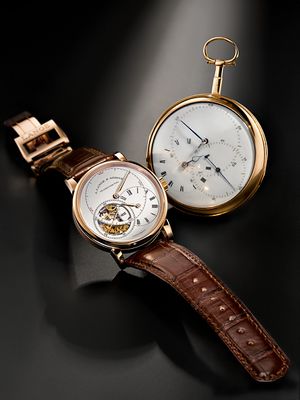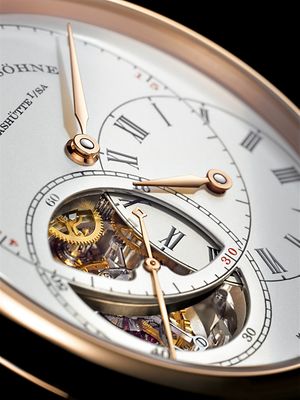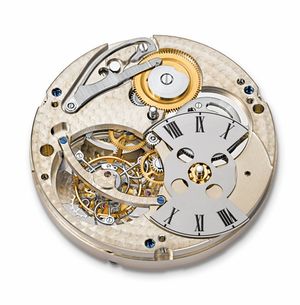Precision above all: the RICHARD LANGE TOURBILLON “Pour le Mérite”
Precision above all: the RICHARD LANGE TOURBILLON “Pour le Mérite”
| other languages: de en es fr it ru |



Glashütte, January 2011
The fourth A. Lange & Söhne timepiece honoured with the distinction “Pour le Mérite” embodies a fusée-and-chain transmission as well as a tourbillon with a patented stopseconds mechanism. The underlying purpose shared by both of these grand complications is to improve rate stability and precision. The prominent regulator dial with its fascinating pivoting segment was inspired by a famous historic paragon.
There is hardly another watchmaker who can take more credit for the advancement of precision horology in Saxony than Johann Heinrich Seyffert (1751-1817). At the royal court and among scientists, his timepieces were immensely popular. His design concepts influenced the most talented artisans of his guild, elevating the art of horology in Dresden to new heights. In 1845, this trend culminated in the establishment of the first German watch manufactory by Ferdinand A. Lange. The circle of prestigious buyers of Seyffert’s fewer than one hundred exquisite timepieces also included the famous explorer and naturalist Alexander von Humboldt. For his expedition to South America, he acquired a Seyffert chronometer and took the time in 1797 to travel to Dresden expressly to learn the art of navigation with a sextant and barometer. According to Humboldt’s notes, Seyffert’s chronometer was accurate to four or five seconds a day and when stationary, its rate accuracy even improved to less than one second in 24 hours. Even today, two hundred years later, this degree of precision is nothing short of impressive.